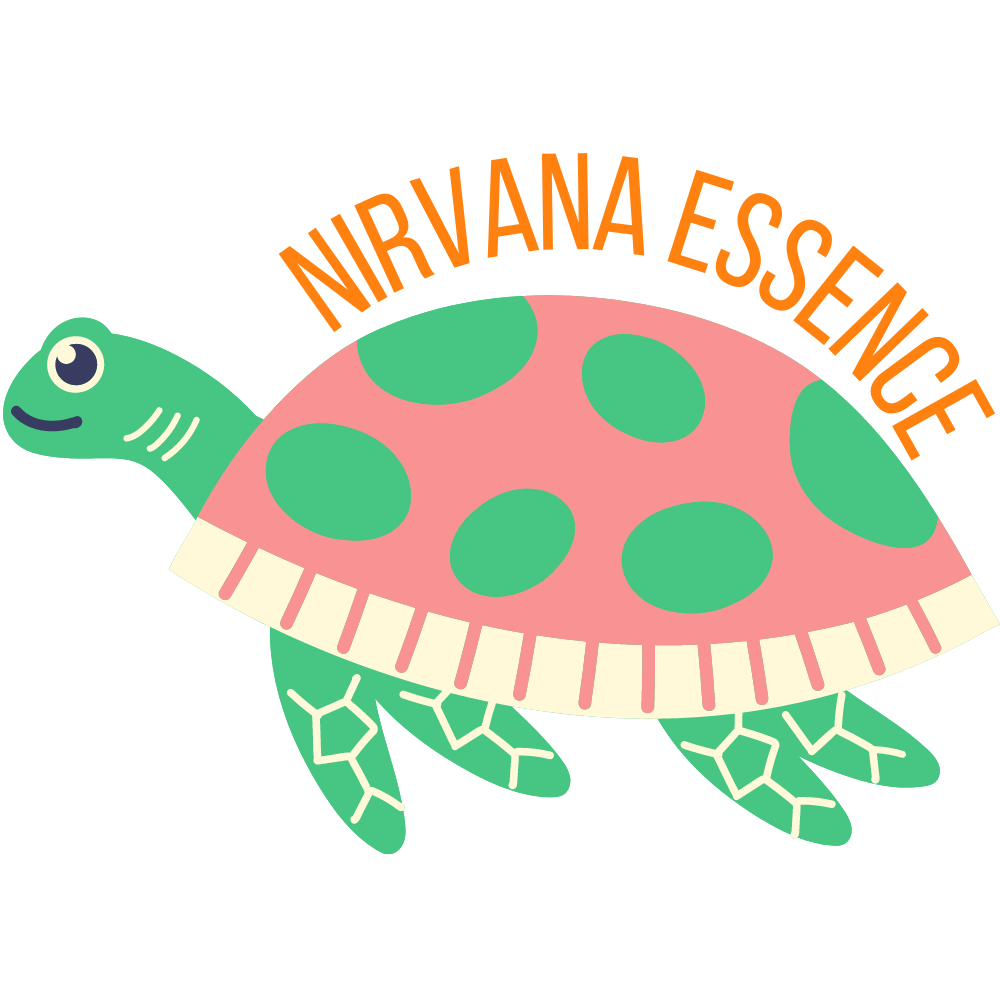Introduction to Mudras
Mudras, the sacred hand gestures used in yoga and meditation, are powerful tools that can enhance your spiritual practice. These hand gestures, often performed with the left hand, are more than just symbolic; they are believed to direct the flow of energy in the body and can have profound effects on your physical and mental well-being.
The Origins of Mudras
The origins of mudras can be traced back to ancient practices in Buddhism and classic yoga. These sacred hand gestures were used as a means of expressing and evoking spiritual feelings and states of consciousness. Today, they remain an integral part of yoga and meditation practices around the world.
Understanding the Symbolism of Mudras
Each mudra carries its own unique symbolism and meaning. For instance, the Gyan Mudra, formed by touching the tip of the thumb to the tip of the index finger, symbolizes the unity of universal and individual consciousness. The palm facing upwards in this mudra signifies openness and receptivity.
The Prana Mudra, on the other hand, is performed by touching the tip of the thumb to the tips of the ring finger and little finger, with the other two fingers stretched out. This mudra is said to stimulate the flow of prana, or life force, in the body, enhancing vitality and health.
Guide to Mudras 101: Learning the Basics
Mudras, or yoga hand gestures, are an integral part of the practice of yoga and meditation. They are symbolic gestures often made with the hands and fingers to stimulate different parts of the body involved with breathing and to affect the flow of energy in the body. If you’re new to the practice of yoga or meditation, you might be wondering how to get started with mudras. Here’s a simple guide to help you understand the basics:
Gyan Mudra (Mudra of Knowledge): This is one of the most common mudras used in meditation and yoga. To perform this mudra, bring your right hand in front of you with the palm facing upwards. Touch the tip of your thumb to the tip of your index finger, forming a circle. The other three fingers should be straight but relaxed. This mudra helps to increase concentration and creativity.
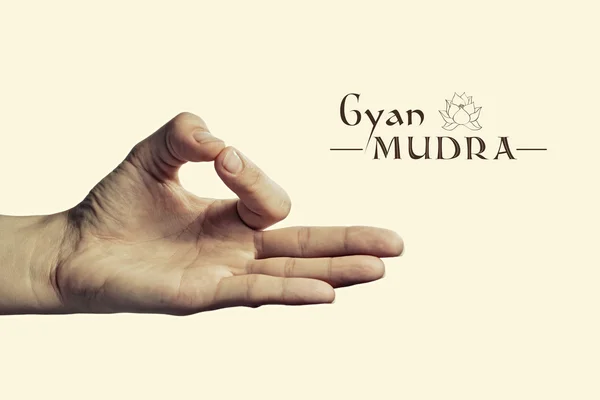
Prana Mudra (Mudra of Life): This mudra is used to awaken the prana, the vital life force within us. To perform this mudra, touch the tip of your thumb to the tips of your ring finger and little finger, while keeping the other two fingers straight. This mudra helps to stimulate the energy flow in the body.

Vayu Mudra (Mudra of Air): This mudra is used to control the air element in the body. To perform this mudra, bend your index finger and place the base of your thumb on the bent finger, with the thumb’s tip touching the middle and ring fingers. The little finger should be straight. This mudra helps to relieve problems related to air imbalances, such as gas-related problems, gout, and arthritis.
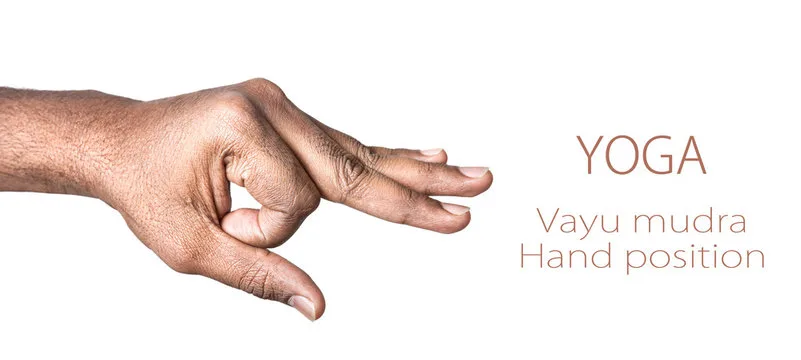
Common Mudras to Use in Your Yoga Practice
In addition to the Gyan, Prana, and Vayu mudras, there are several other mudras that you can incorporate into your yoga or meditation practice. Here are a few of them:
Anjali Mudra (Salutation Seal): Also known as the prayer mudra, this is a common mudra seen in yoga classes. To perform this mudra, bring your palms together in front of your heart, with your fingers pointing upwards. This mudra is often used at the beginning and end of a yoga class to express respect and gratitude.
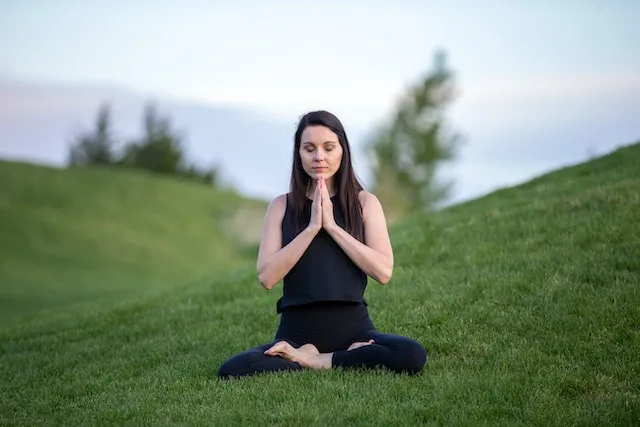
Chin Mudra (Gesture of Consciousness): This mudra is performed by touching the tip of the index finger to the tip of the thumb, with the other three fingers stretched out and relaxed. It is said to promote physical balance and mental calm.
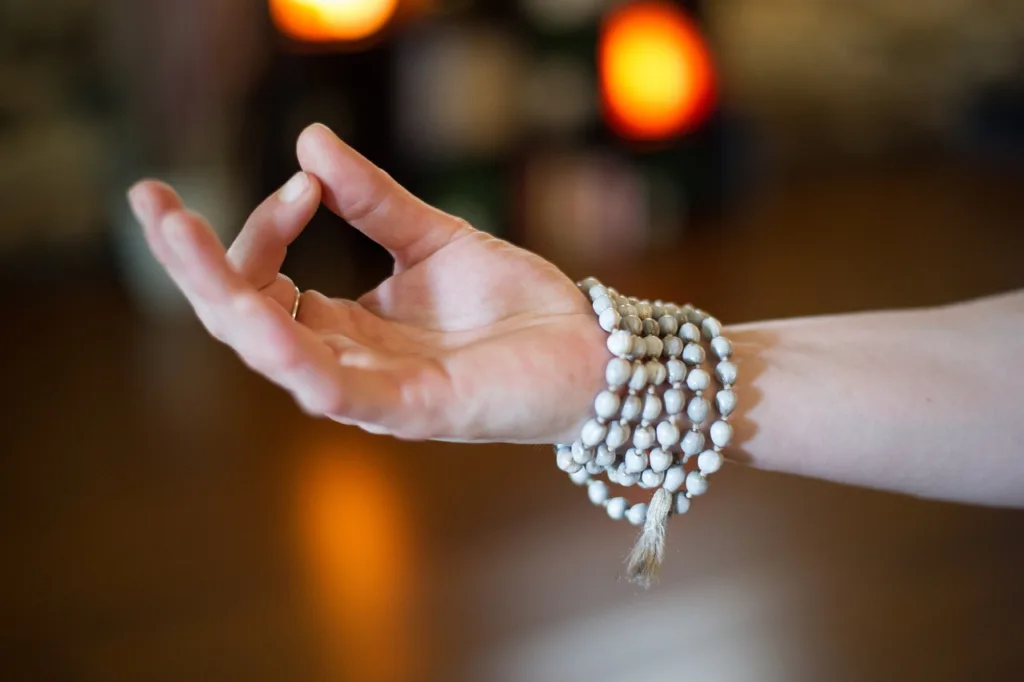
Dhyana Mudra (Meditation Seal): This mudra is used in meditation to aid in the attainment of spiritual enlightenment. To perform this mudra, place your left hand on your lap, palm facing upwards. Place your right hand on top of the left, also with the palm facing upwards, and touch the tips of the two thumbs together.
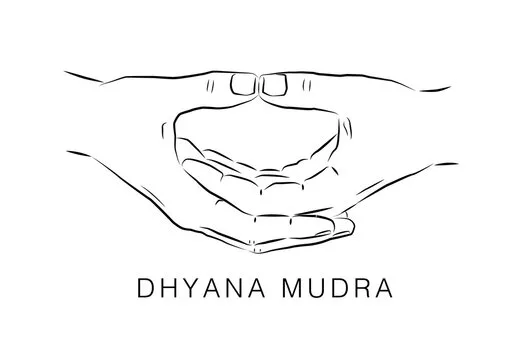
Remember, the practice of mudras involves not just the hands, but also the mind. As you perform these mudras, focus your mind on the intention behind each gesture, and let that intention guide your practice.
Mudras in Meditation: Enhancing Your Practice
Mudras are not only used in yoga but are also a significant part of meditation practices. They are used to help focus the mind and deepen the meditation experience.
For example, the Gyan Mudra, where the tip of the thumb touches the tip of the index finger, is often used in meditation practices. This mudra is believed to enhance concentration, memory, and creativity. It’s often associated with knowledge and wisdom.
The Dhyana Mudra is another common mudra used in meditation. In this mudra, the right hand is placed on top of the left hand, palms facing upwards, with the tips of the thumbs touching. This mudra is said to aid in the attainment of spiritual enlightenment and is often used during deep meditation or contemplation.
Incorporating mudras into your meditation practice can help you focus your mind, balance your energy, and deepen your meditation experience. As you perform these mudras, it’s important to maintain a relaxed and comfortable posture, and focus on your breath.
Remember, the practice of mudras is not just about the physical gesture; it’s also about the intention behind the gesture. As you perform these mudras, focus your mind on the intention behind each gesture, and let that intention guide your practice.
Healing Mudras: The Power of Sacred Hand Gestures
Mudras, or sacred hand gestures, have been used for centuries in yoga and meditation practices as a means of healing and connecting the physical body to the spiritual mind. The term “mudra” itself translates to “seal” or “gesture” in Sanskrit, and each mudra is believed to have specific benefits associated with it.
Mudras work on the principle of Ayurveda, which suggests that the human body is made up of five elements: fire, air, ether, earth, and water. Each finger represents one of these elements:
- Thumb: Fire
- Index finger: Air
- Middle finger: Ether
- Ring finger: Earth
- Little finger: Water
By creating a circuit of energy within the body through specific hand and finger positions, mudras are believed to balance these elements and promote health. For example, the Prithvi Mudra, performed by touching the tip of the thumb to the tip of the ring finger, is said to stimulate the earth element in the body, promoting strength and endurance.
Another powerful mudra is the Apana Mudra. This mudra, performed by touching the tips of the middle and ring fingers to the thumb, is believed to aid in the elimination of waste from the body and help in detoxification.
It’s important to note that while mudras can be a powerful tool in promoting health and well-being, they are not a substitute for medical treatment. Always consult with a healthcare provider for any health concerns.
Benefits of Mudras: Enhancing Your Yoga and Meditation Practices
Incorporating mudras into your yoga and meditation practices can have a range of benefits. Not only can they help to enhance your concentration and deepen your meditation, but they can also promote physical health and well-being.
Mudras are powerful tools that can enhance your yoga and meditation practices. Here are some of the benefits of incorporating mudras into your practice:
- Improved Concentration: Mudras like the Gyan Mudra can help to improve concentration and clarity of thought, making them particularly beneficial for meditation practice.
- Enhanced Energy Flow: Mudras are believed to affect the flow of energy in the body, helping to balance the different elements in the body and promote physical and mental well-being.
- Deepened Meditation: Mudras like the Dhyana Mudra can help to deepen your meditation, aiding in the attainment of spiritual enlightenment.
- Physical Health Benefits: Some mudras, like the Prithvi Mudra, are said to promote physical health and well-being by stimulating different parts of the body involved with breathing and affecting the flow of energy in the body.
For instance, the Surya Mudra, performed by bending the ring finger to touch the base of the thumb, with the thumb’s tip touching the middle and little fingers, is said to stimulate the fire element in the body, promoting weight loss and increasing metabolism.
Conclusion: Incorporating Mudras into Your Daily Routine
Mudras are a powerful tool that can enhance your yoga and meditation practices. By incorporating these sacred hand gestures into your daily routine, you can direct the flow of energy in your body, promote physical and mental well-being, and deepen your spiritual practice. Whether you’re a seasoned yogi or a beginner, mudras offer a simple yet profound way to connect with your inner self and the universe around you.
Remember, the practice of mudras is not just about the physical gesture; it’s also about the intention behind the gesture. As you perform these mudras, focus your mind on the intention behind each gesture, and let that intention guide your practice.
So, why not give mudras a try? Whether you’re sitting in meditation, standing in a yoga asana, or simply taking a moment to breathe, these powerful hand gestures can help you to connect with your inner self and the world around you.
For further reading, you may find this comprehensive guide to mudras helpful. And if you’re interested in the origins of mudras, this article on the history of mudras in Buddhism and yoga is a fascinating read.
FAQs
Q1: What are the powerful mudras?
A1: Some of the most powerful mudras include the Gyan Mudra, which enhances knowledge and wisdom, the Prithvi Mudra, which is associated with strength and endurance, and the Dhyana Mudra, which aids in deep meditation and spiritual enlightenment. Each mudra is a subtle yet powerful tool that can enhance your yoga and meditation practices.
Q2: What are the 4 mudras?
A2: There are hundreds of mudras, but four commonly used ones in yoga and meditation are the Gyan Mudra (Mudra of Knowledge), Prana Mudra (Mudra of Life), Apana Mudra (Mudra of Digestion), and Dhyana Mudra (Mudra of Meditation). Each mudra has a unique hand position and is associated with specific benefits.
Q3: Is there science behind mudras?
A3: While mudras are an ancient practice rooted in yoga philosophy and spirituality, there is limited scientific research on their effects. However, some studies suggest that the practice of mudras can influence the mind and body, potentially aiding in stress reduction and improving focus and concentration.
Q4: Which hand is used for mudra?
A4: Mudras can be performed with either hand, and some mudras involve the entire body. However, in many practices, the right hand is often used for performing mudras. It’s important to follow the specific instructions for each mudra, as the hand position can vary.
Q5: Is mudra done with both hands?
A5: Yes, many mudras are performed using both hands. For example, in the Dhyana Mudra, the right hand is placed on top of the left hand, with both palms facing upwards. However, some mudras can also be performed with a single hand.
Q6: What are the 5 elements of mudras?
A6: In the practice of mudras, each finger is associated with one of the five elements: fire (thumb), air (index finger), ether (middle finger), earth (ring finger), and water (little finger). Different mudras aim to balance these elements in the body through specific hand positions.
Q7: How many mudras are there in total?
A7: There are hundreds of mudras used in yoga and meditation practices. Each mudra has a unique hand position and is associated with specific benefits.
Q8: What is the mudra for strength and power?
A8: The Prithvi Mudra is often associated with strength and power. This mudra is performed by touching the tip of the thumb to the tip of the ring finger, stimulating the earth element in the body and promoting physical strength and endurance.
Q9: What is the winning mudra?
A9: The Varada Mudra is often referred to as the “winning” or “granting” mudra. This mudra is associated with compassion, sincerity, and the granting of wishes or blessings.

